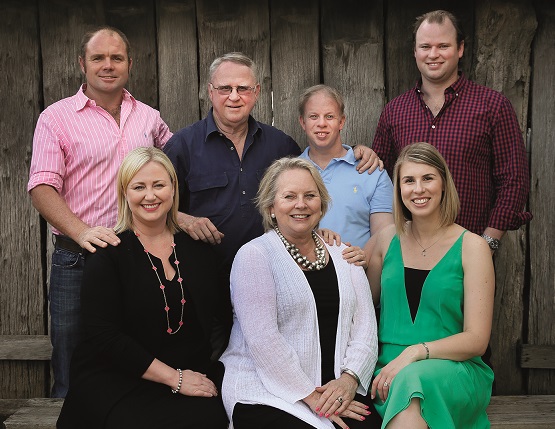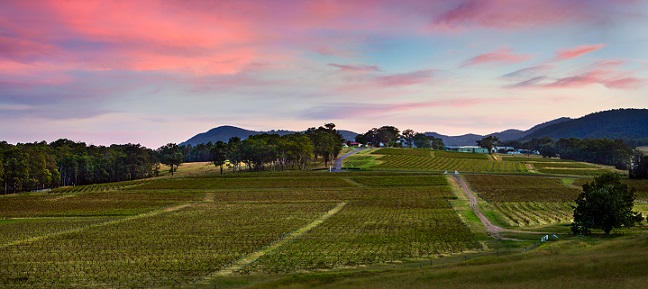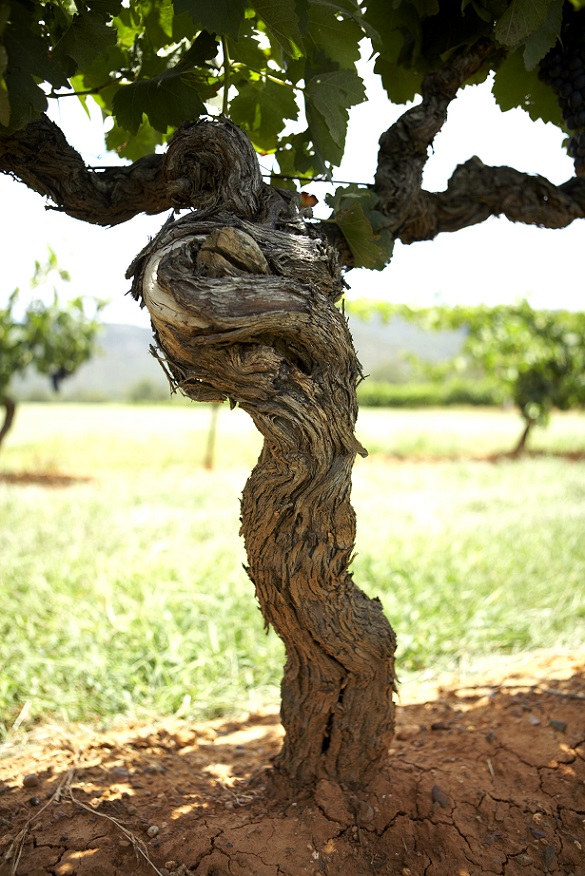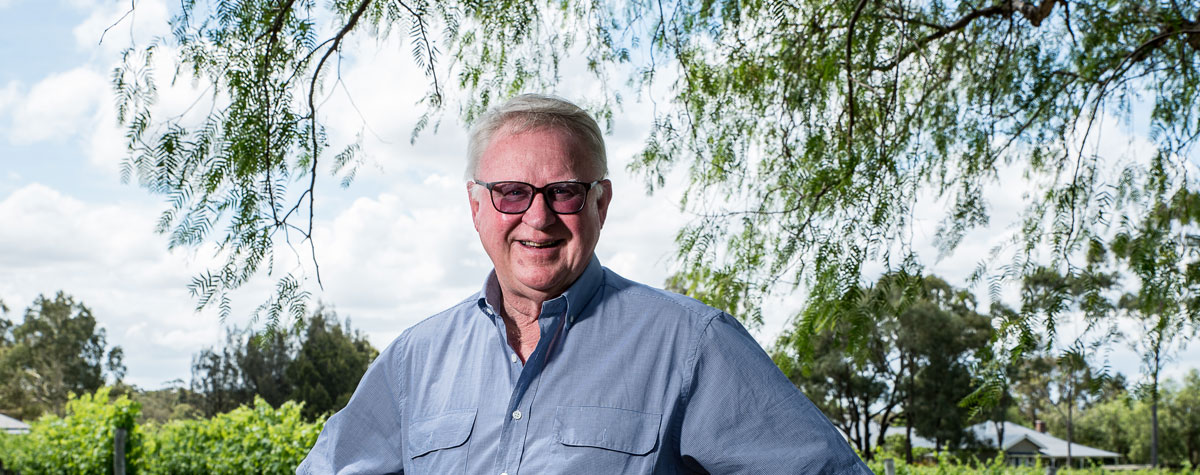The old vines do most of the hard work. Then it’s just a matter of choosing the right picking day and not interfering too much.
“The winemaker’s job is just to shepherd it through,” Bruce tells Canopy. “You start with what you get in the vineyard – that flavour and chemistry – and the most important thing in the life of any of those things is the day you pick it. You get that right and you don’t have to do much else.”

Bruce Tyrrell is the fourth-generation owner of Tyrrell’s Wines in the Hunter Valley, New South Wales. He runs the business, which dates back to 1858, with wife Pauline and children Chris, Jane, and John. (Photo shows the family: Andy, Jane, Bruce, Pauline, John, Chris and Tegan.)
The family’s Vat 1 Hunter Semillon, first produced in 1962, is now widely regarded as one of the world’s best white wines. But the winemaking behind it is very simple or, as Bruce sums up the approach, “Leave the bloody thing alone”.
In fact, if a young winemaker says he wants to get involved in making Semillon, the best thing to do, according to Bruce, “is take him round the back of the winery and shoot him”. I think he’s joking but I’m not totally sure.
The goal for Tyrrell’s classic Hunter Semillon is to represent “unplayed with fruit, direct from the vineyard”.
The grapes are harvested from a very old, dry-farmed block near the family’s historic winery in Pokolbin. The vineyard, Short Flat, was planted in 1923, with the vines going into the alluvial sandy loam soil on their own roots. Of its 33 acres (13.3ha), 7.6 (3ha) are devoted to Semillon.
The grapes are handpicked relatively early, at 10-11 Baume, “since the flavours come early,” Bruce explains. “They are flavour ripe at that. You can leave them to 13 degrees potential alcohol, but you lose the acid – it becomes flat.”
Vat 1 typically has 10.5-11% ABV, a pH of 3-3.1, and TA of 6-8g/L.
'I probably eat 2 tonnes of grapes per vintage'

During the build-up to harvest, Bruce’s most important job is visiting the vineyards to taste the grapes. “I probably eat 2 tonnes of grapes per vintage. I spend a lot of time in the vineyard, looking for flavour and balance. You don’t want any greens or searing acid.”
The picking date is decided by the winemaking team, which comprises Bruce, son Chris (the chief operating officer), Andrew Spinaze (long-time chief winemaker), Andrew Pengilly (vineyards manager), and Mark Richardson (red winemaker).
Every day during vintage, they meet in the lab at 4pm to taste the juice and check the numbers (especially the pH). To illustrate the importance of this meeting, Bruce says: “If God came knocking, he’d have to wait until we’d done our daily juice tasting. Sorry, she’d have to wait.”

Other key principles and steps in the making of Tyrrell’s Vat 1:
- Grapes picked in the early hours of the morning;
- Fruit into the crusher in the best possible condition;
- Gentle pressing;
- Through the crusher and press as quick as possible, “so it doesn’t oxidise and you don’t get any coarseness out of the skins or stalks”;
- Add 30% of stems in the press to create drainage channels amidst Semillon’s notoriously slippery skins;
- Separate the free-run juice;
- Settle for 24 hours, then “rack off the mud”;
- Use neutral yeast, “stir and let it go”;
- Relatively cool fermentation in temperature-controlled stainless steel tanks;
- No malo, no oak – “the aromatics are delicate, oak will destroy them”;
- Minimal time on fine lees, no stirring;
- Fining with casein and bentonite;
- Then filtering and bottling within six months of the harvest “to maintain its freshness”.
Bruce, who studied agricultural economics at the University of New England and joined the company full time in 1974, aged 23, started putting the Semillon away for ageing in 1989, when he secretly hid 1,000 cases.
The Vat 1 name stems back to Bruce’s father, Murray, who started putting the best fruit in numbered oak vats in the 1960s.
'When you need to give the Semillon a bit of zing you’ll be very glad you’ve got Trebbiano'Tyrrell’s has a wide variety of grapes growing in its 121ha of vineyards (plus another 40ha that’s leased), but the mainstays are Shiraz, Chardonnay and Semillon. They also have three acres of Trebbiano which, according to Bruce, is used in vintages when the acidity is low – “when you need to give the Semillon a bit of zing you’ll be very glad you’ve got the Trebbiano”. He says if you pick it at 15-16°Bx, “it’s all acid and no flavour, so you don’t change the flavour of the Semillon but you do change the chemistry. Lowering the pH, the wine is more stable and fresher.”














.png)






